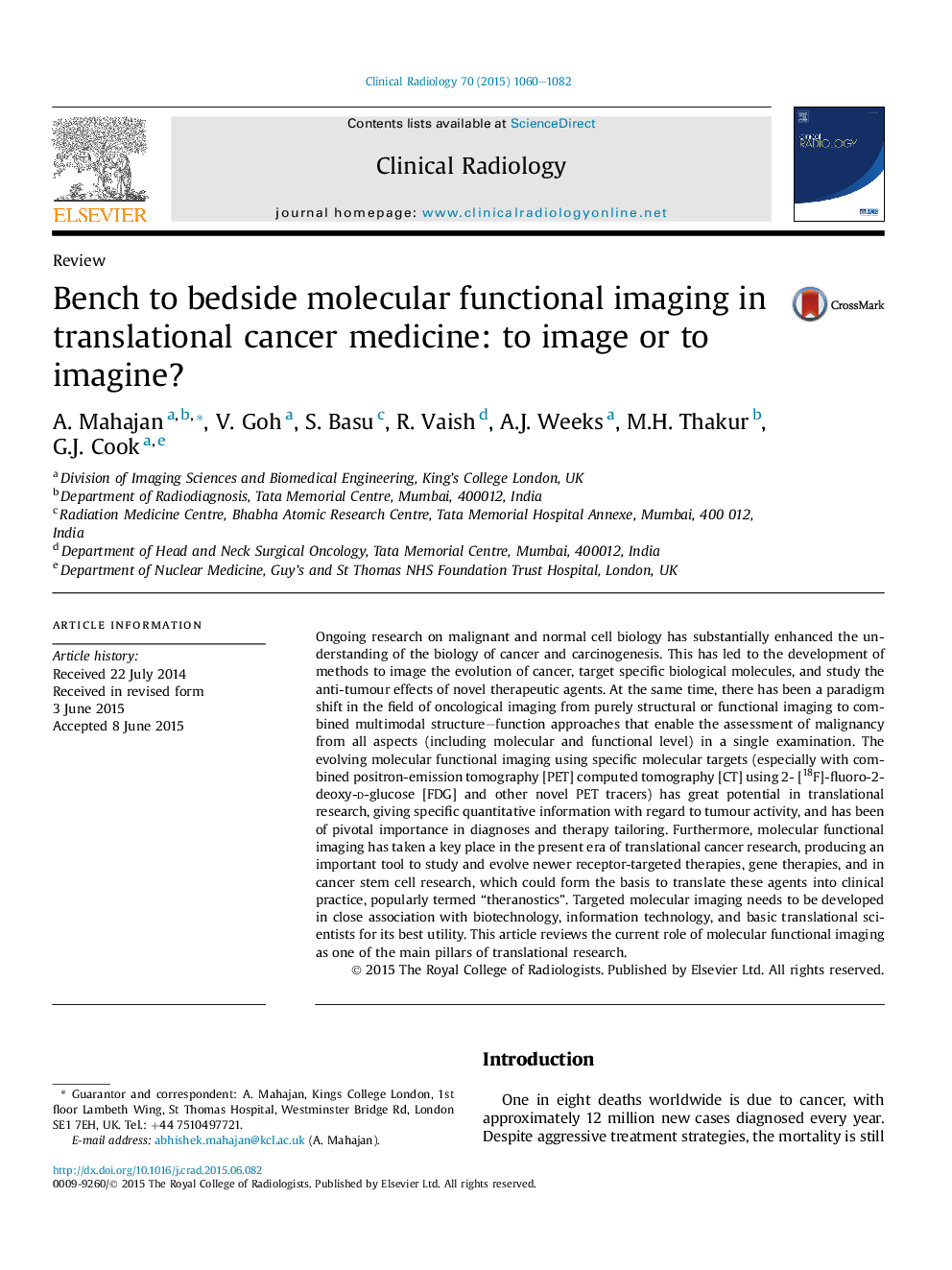| Article ID | Journal | Published Year | Pages | File Type |
|---|---|---|---|---|
| 3981499 | Clinical Radiology | 2015 | 23 Pages |
•Molecular functional imaging (MFI) gives insight into the tumor biology and intratumoral heterogeneity.•It has potential role in identifying radiomic signatures associated with underlying gene-expression.•Radiomics can be used to create a road map associating these signatures with a range of molecular information.•In near future MFI will provide an unprecedented opportunity to improve personalised cancer management.
Ongoing research on malignant and normal cell biology has substantially enhanced the understanding of the biology of cancer and carcinogenesis. This has led to the development of methods to image the evolution of cancer, target specific biological molecules, and study the anti-tumour effects of novel therapeutic agents. At the same time, there has been a paradigm shift in the field of oncological imaging from purely structural or functional imaging to combined multimodal structure–function approaches that enable the assessment of malignancy from all aspects (including molecular and functional level) in a single examination. The evolving molecular functional imaging using specific molecular targets (especially with combined positron-emission tomography [PET] computed tomography [CT] using 2- [18F]-fluoro-2-deoxy-d-glucose [FDG] and other novel PET tracers) has great potential in translational research, giving specific quantitative information with regard to tumour activity, and has been of pivotal importance in diagnoses and therapy tailoring. Furthermore, molecular functional imaging has taken a key place in the present era of translational cancer research, producing an important tool to study and evolve newer receptor-targeted therapies, gene therapies, and in cancer stem cell research, which could form the basis to translate these agents into clinical practice, popularly termed “theranostics”. Targeted molecular imaging needs to be developed in close association with biotechnology, information technology, and basic translational scientists for its best utility. This article reviews the current role of molecular functional imaging as one of the main pillars of translational research.
